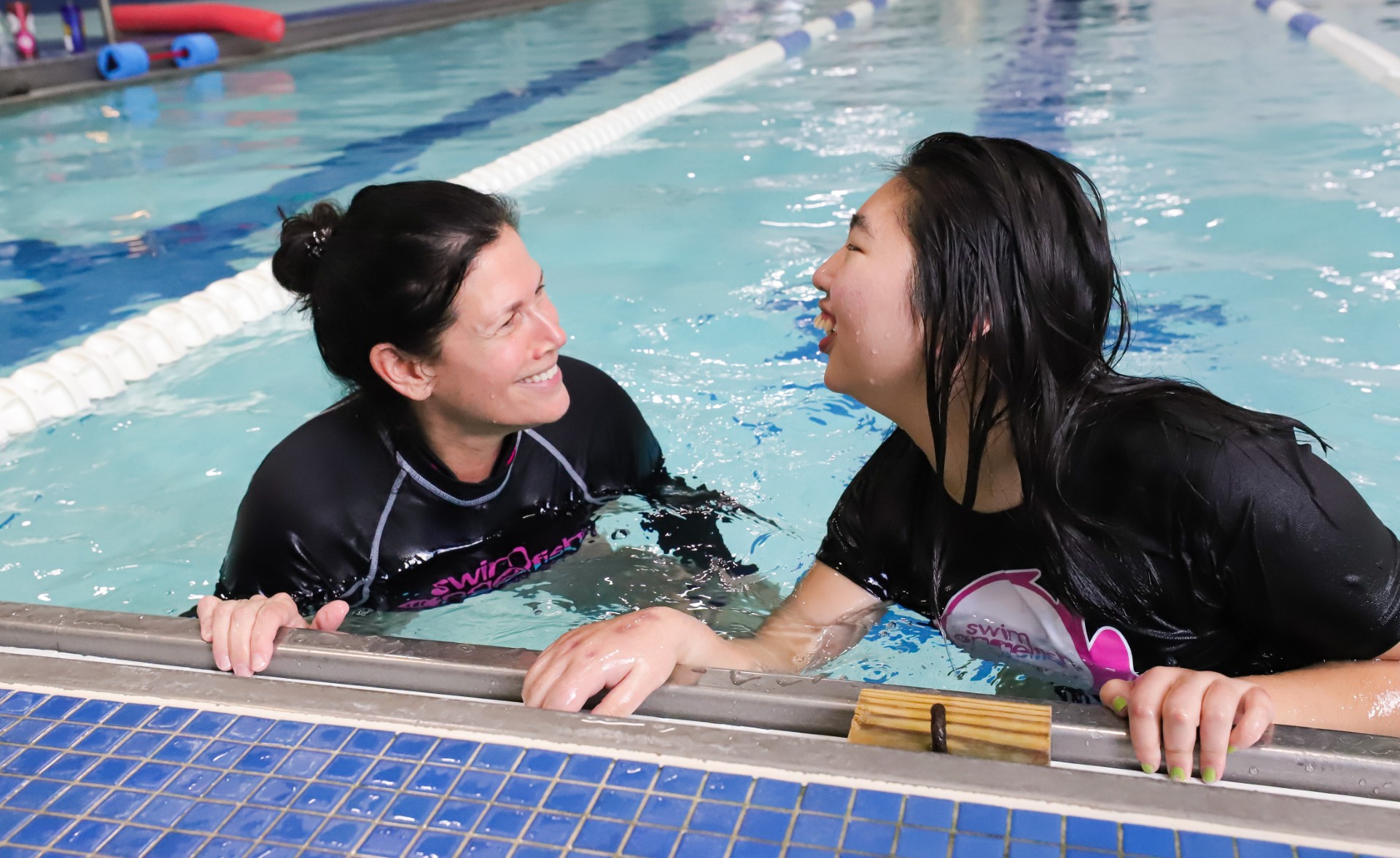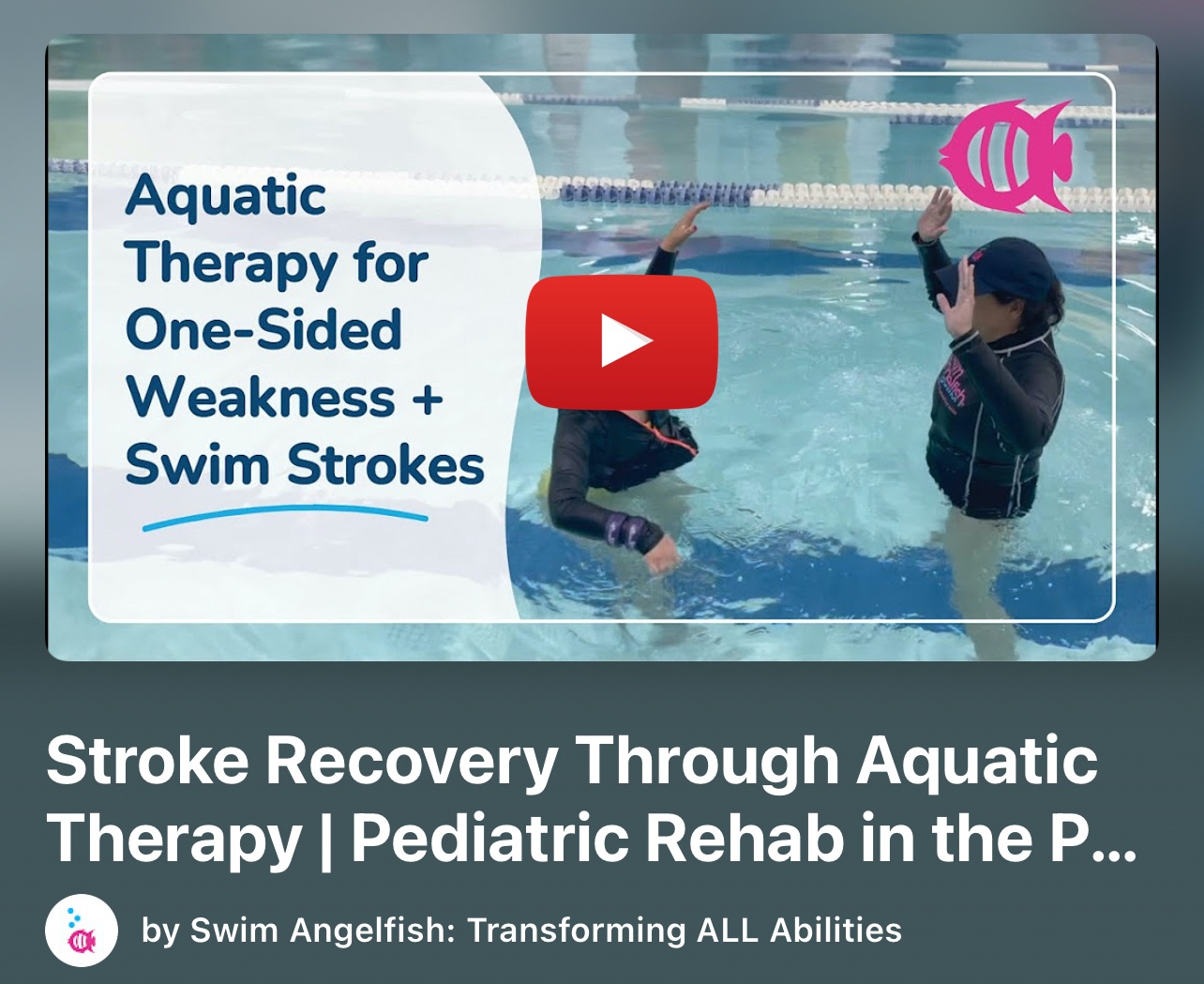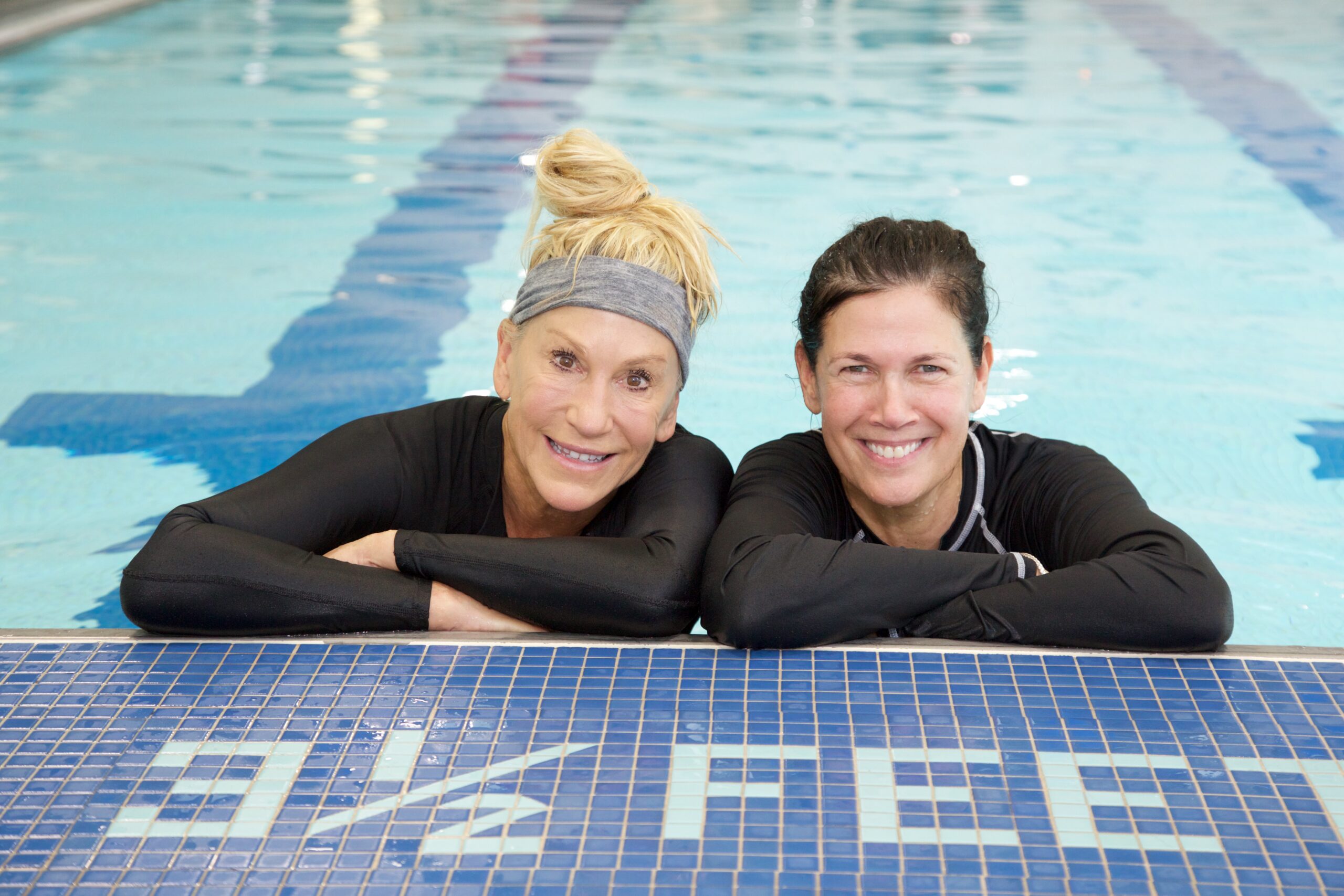Finding Strength in the Water: Aquatic Therapy for Childhood Stroke Recovery

The journey of recovery after a childhood stroke can be challenging, often requiring time, dedication, and therapeutic support to rehabilitate. But what if there was an environment that could ease this path?
Is aquatic therapy an effective treatment following a stroke? For those recovering from a stroke, water offers a unique sensory environment. Let’s explore the science behind this therapy by examining three key properties of water and how they become invaluable tools in your child’s post-stroke rehabilitation journey.
Pediatric Stroke Explained
Many times, a stroke in children affects one side of the body, leading to hemiparesis (weakness on one side) or hemiplegia (paralysis on one side). This can result in a loss of both movement and sensation on the affected side, impacting everything from fine motor skills to gross motor abilities. It’s important to understand that strokes in children can occur at various times: they can happen around the time of birth (perinatal stroke), in the period after birth (neonatal or childhood stroke), or even as a consequence of other medical events such as post-surgery complications or head trauma.
Aquatic Therapy for Stroke Recovery
As soon as your child is ready, the journey of rehabilitation begins. We understand that every child’s recovery after a stroke is unique to them, with each child progressing at their own pace. Our role is to provide aquatic therapy – a highly effective treatment for individuals post-stroke to aid in regaining lost function and improve independence.
What makes water such an effective tool in the rehabilitation journey after a stroke? The answer lies in its fascinating properties. We’ll examine three crucial ones: buoyancy, viscosity, and hydrostatic pressure, and uncover how they can significantly aid in the recovery of movement, balance, and sensory awareness.
Aquatic Therapy Benefits for Stroke Recovery
Buoyancy
Think about how dense objects tend to sink, while more buoyant objects float. In the context of post-stroke recovery, this principle of buoyancy plays a crucial role. When you have increased muscle tone and tightness you have a denser extremity. When you have lower tone and more adipose tissue you have a more buoyant extremity. This results in asymmetry in the body, commonly seen after a stroke due to the variations in the density of muscle tissue in different areas of the body.
Trying to float or move in a straight direction is difficult if there is any type of asymmetry in the body and abnormal tone. The water’s properties can create a spin or rotation when there’s unevenness in how the body floats. This means someone has to really engage their muscles to stop that spinning and stay still or swim straight.
It’s this active engagement of muscles, forced by the body’s interaction with buoyancy, that makes aquatic therapy such a powerful tool for regaining strength and function after a stroke.
Viscosity
Another valuable property of water for post-stroke aquatic therapy is its viscosity, or its thickness, which naturally slows down movement.
Following a stroke, balance reactions can be delayed, leading to increased unsteadiness and a higher risk of falls. Practicing balance reactions in the pool, whether in a sitting or standing position, leverages the water’s viscosity to slow down the speed of motion.
This slower pace is incredibly beneficial post-stroke as it provides crucial extra time for motor planning and for the body to recruit the necessary muscles for an effective balance response.
Think about how it would feel to move through mud or jello. The resistance created by the water’s viscosity as it surrounds the body creates a similar feeling to what you experience when moving in the water.
Hydrostatic Pressure
The final water property that offers considerable benefits post-stroke is hydrostatic pressure. This can be described as a consistent, encompassing sensory input around the body, much like a blanket of compression. The deeper you are submerged the more the hydrostatic pressure increases. This uniform pressure provides substantial proprioceptive feedback, significantly enhancing the individual’s awareness of their body’s position in space.
This sense of body awareness is often impaired after a stroke due to sensory and movement deficits. The consistent pressure from the water helps to recalibrate this system, offering valuable input that can aid in regaining a better understanding of limb position and movement.
Post Stroke Rehabilitation Exercises
To truly understand the transformative power of aquatic therapy in post-stroke recovery, let’s look at a few examples. The following case studies highlight the real progress individuals have made by harnessing the unique properties of water and skilled therapy techniques.
Combining the unique properties of water with skilled Aquatic Therapy techniques, means you can truly transform your clients’ potential for improved function after a stroke.




